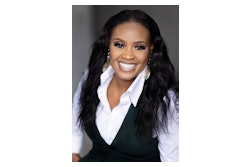My hair completely wet, umbrella half broken and socks soaked, I was ready! I walked a mile from campus to a church where my local polling place to vote was, like many United States citizens did throughout the nation on November 6, 2018. However, this midterm election seemed to have a different energy as “unexpected” candidates throughout the nation emerged in response to the political conditions they found themselves in after the election of Trump. Who were these “unexpected” candidates? Women of color. As a member of this group, I placed my vote, walked home in the cold, and proceeded to an early bed time.
I could not bear the anxiety, excitement or disappointment of the election results. I purposely disengaged as I was ready to meet any outcome in the morning. I woke up and was met with a historical night of firsts. I could not help but take a moment of silence for all the women of color before me who fought so that one day I could have a vote. Women of color pre and post the 19th Amendment protested and fought for their right to vote, but do not get the credit they deserve. The leaders of the Women’s Suffrage Movement are identified as Susan B. Anthony and Elizabeth Cady Stanton, and while they were instrumental in securing the vote, we cannot turn a blind eye to the racial dynamics that were at play during this time.
Specifically, Black women during the suffrage movement experienced exclusionary practices by White women and Black men. I remember when I first read about this as an undergraduate in White Women’s Rights: The Racial Origins of Feminism in the United States by Louise Michele Newman, I was shocked. However, resistance and resilience have always been present, and I found this in the works of Sojourner Truth, Ain’t I a Woman and Adella Hunt Logan, Colored Women as Voters. What is clear is that women of color have fought for their seat at the table throughout history.
 Dr. Nichole Margarita Garcia
Dr. Nichole Margarita GarciaFast forward to the Presidential Election of 2016 in which Trump campaigned against Hillary. During the presidential debate, Trump notoriously cut off Hillary and interjected his comment, “such a nasty woman.” Since then the hashtag #NastyWomen has hit Twitter to rebuttal the misconceptions of what Trump deems “a nasty woman.” Democratic women of color, in office, have also held their own under a Republican administration. For example, Maxine Waters, U.S. Representative for California’s 43rd congressional district, had an exchange with Treasury Secretary Steve Mnuchin at a House Committee on Financial Services, where she reclaimed her time as her question went unanswered.
This midterm election was a historical night of firsts in which women of color reclaimed their time. We felt the presence of Rashida Tlaib, Alexandria Ocasio-Cortez, Sharice Davids, Illhan Omar, and Ayanna Pressly to name a few. Ocasio-Cortez elected to New York’s 14th District will be the youngest person to serve in Congress. Democrats Sharice Davids and Deb Haaland became the first Native American women elected to Congress from Kansas and New Mexico. The first Muslim women elected to Congress, Democrats Rashida Tlaib and Illhan Omar are from Michigan and Minnesota. Finally, Democrat Ayanna Pressly became the first Black woman elected to Congress from Massachusetts. All these women of color possess identities, if not multiple identities, that the Trump Administration has targeted to repeal rights, access, and/or equal treatment.
This also served as a time for me to reflect on the parallels between women of color in politics and academia. The American College President Study 2017 (ACPS) reports that while college and universities presidents are slowly changing, the majority continues to be a “White male in his early 60s with a doctoral degree who has been in his current position for seven years.” This is alarming, but not shocking. ACPS also reports that there was minor growth in presidents of minority backgrounds from 12.6 in 2011 to 16.8 in 2016, but this is nuanced due to the number of these presidents who also work at minority serving institutions. Due to this fact, I would argue that predominantly White or historically White institutions could learn from minority serving institutions in this realm. A wealth of knowledge regarding minority serving institutions can be found through The Penn Center for Minority Serving Institutions directed by Dr. Marybeth Gasman.
Women of color, in academic positions, also need to be visible in leadership positions, such as presidencies, at universities and colleges. There is a lot to be learned and changed. Regardless, women of color have made a statement this midterm election, and they should be celebrated. I encourage us all to celebrate #NastyWomen of color. Also, in academia, what can we learn from minority serving institutions to not only diversify our student bodies, but our leadership as well?
Dr. Nichole Margarita Garcia is an assistant professor of higher education at Rutgers University, New Brunswick. You can follow her on Twitter @DrNicholeGarcia



















